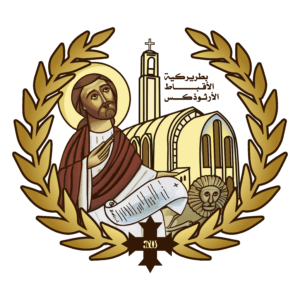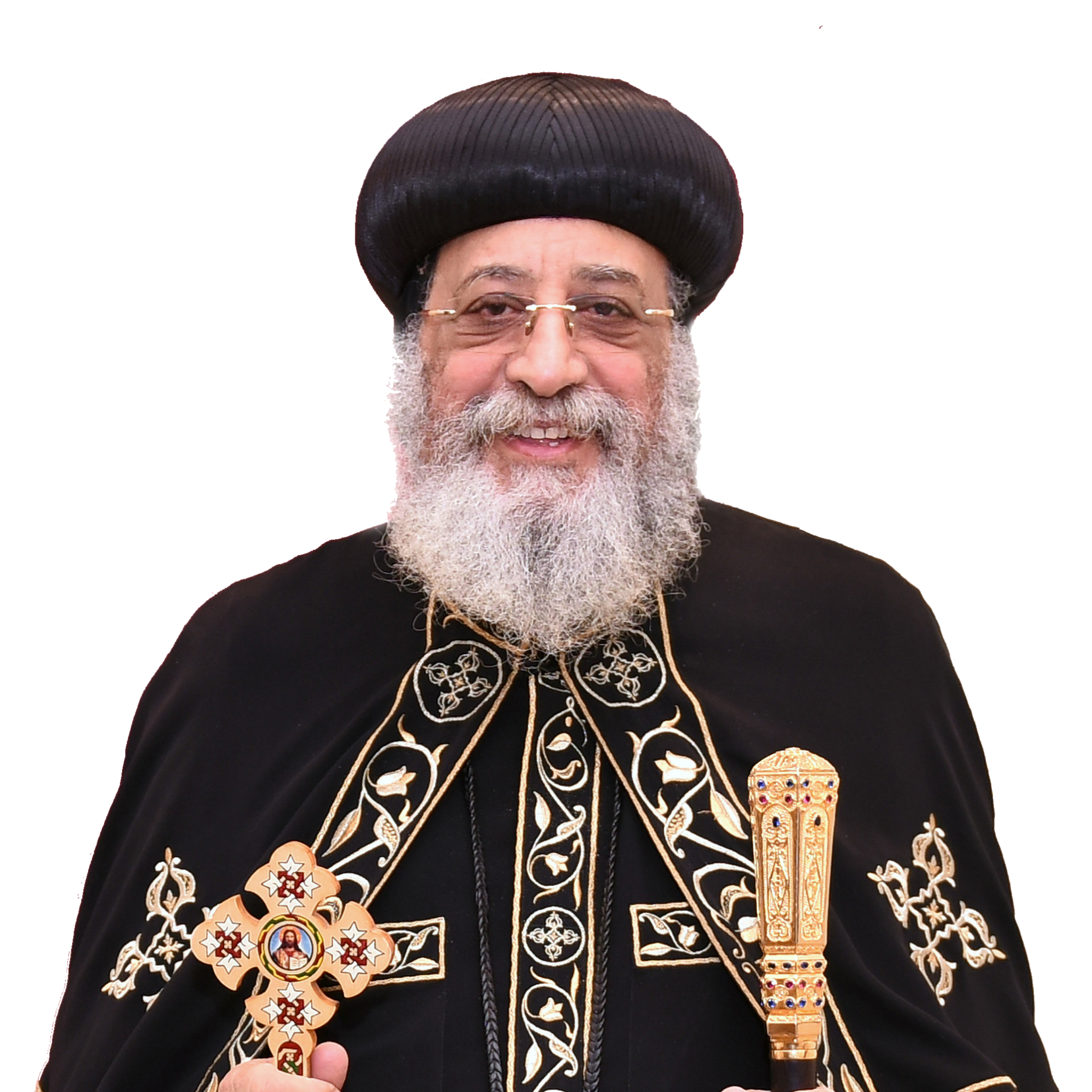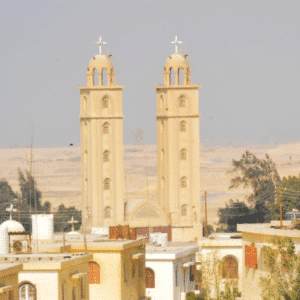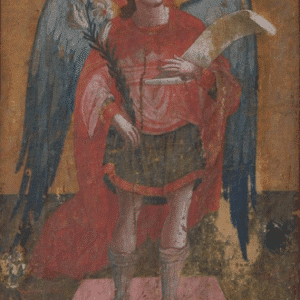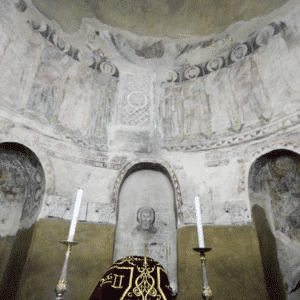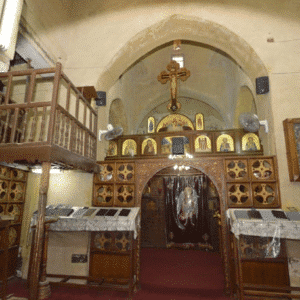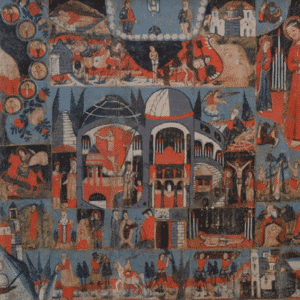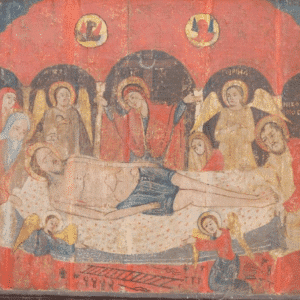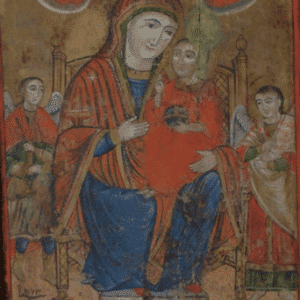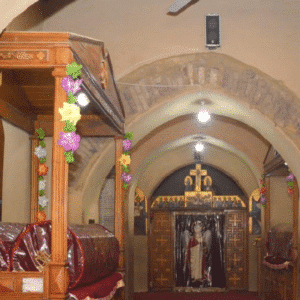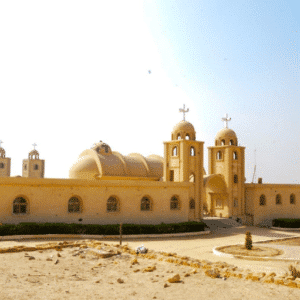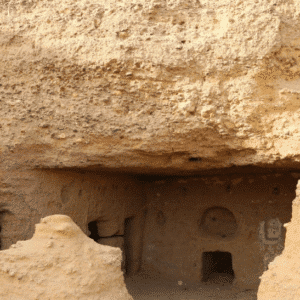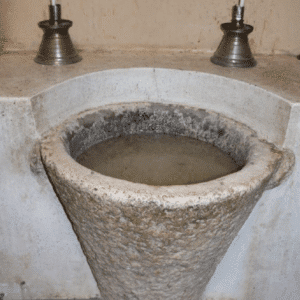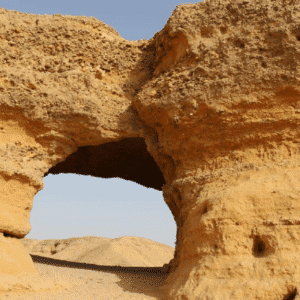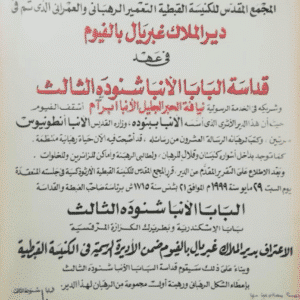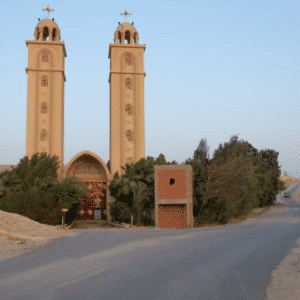Archangel Gabriel’s Monastery, Naqloun Mount, Faiyum
Archangel Gabriel’s Monastery, Naqloun Mount, Faiyum
– Mountain Naqloun is located near the manor Qlmhah Etsa center Fayoum Governorate, which is located on a rocky hill high level of manor Qlmhah, showing the edge of the green valley surrounding the mountain from the western side of the monastery, approximately 3 km from the entrance to the monastery current.
– Monasticism began there at the beginning of the fourth century AD, and it is clear that he had the spiritual and monastic leadership among the monasteries of Faiyum, due to the flourishing of monastic life in the Bicentenarian wilderness.
– The large monastic congregations in the Fayoum region (Monastery of Naqlun and its aftermath) received the patronage and attention of the great monastic father, St. Anthony, who visited the region more than once.
– The origin and establishment of the monastery at that time are related to the great Saint Anba Ur, the grandson of the King of the Levant, and his father is a diocesan, as his holy biography reminds us.
-The consecration of his church (the Church of the Angel Gabriel in the Naqlun Wilderness) was also mentioned in the Coptic Synaxarium Book 26 Baounah, and the Ethiopian Synaxarium Book in Sane 26.
-It is called Deir al-Khasbah. The historian al-Maqrizi mentions that Deir al-Naqlun is called Deir al-Khashab, and the monastery of Gabriel al-Malak.
This name was also mentioned by some ancient historians, such as Ali Pasha Mubarak and Alfred Butler.
-Fanslip also mentions in his trip that he
“traveled to the monastery of the plank,” and Amelino suggested that the reason for calling the monastery the plank is on the basis that the Coptic word pi means “wood” or by adding the definite article pi, so the word becomes the meaning of wood, and then the Coptic name is Deir al-Khashab.
– The reason for naming the monastery with the tree was mentioned in the Abyssinian Synaxarium book. It says that there is a tree on the roof of the church that has a sign that indicates the flood of the Nile.
– Another point of view shows through their Baabarchih traditions of Fayoum, which is that the stage of the Holy Cross has divided the five thrones days of Emperor Constantine and that the private Church of Egypt, part transfer with the beginning of Arabs from entering Egypt, and it seems that with the arrival of Pope Benjamin 38 to Fayoum and put this part Monastery of the Angel Gabriel in Jabal Al Naqlun.
– Abu al-Makarim mentions about Deir al-Naqlun in the 13th century (1209 AD), that it contains a church named after the angel Michael, and in this church, there is a column of marble that looks like water is flowing from it.
– There is also a large fortress overlooking a mountain, and near the monastery, there is a church of the angel Gabriel surrounded by a wall established before the church in 13 Amshir.
– Mount Naqlun is the place where Jacob son of Ishaq son of Ibrahim rested, and where he offered worship and sacrifices to God in the days of Joseph son of Jacob, and this gives special importance to the monastery.
Naqlon’s Wilderness Saints:
Saint Bennouda: a disciple of Saint Anthony and head of the Faiyum monasteries.
Saint Serapion: One of Saint Anthony’s disciples, he was abbot of several monasteries and a spiritual father of nearly ten thousand monks.
Saint Uor: The son of the daughter of the King of Persia, and his father was a magician, his name is Abrashit, who built the church of Archangel Gabriel, who later became the master of Lavi Asom.
The martyr St.Kao (Quo – Abba Kaf): was martyred during the reign of Emperor Diocletian. The Ethiopian Synaxarium book states that his body is in the Naqlun Monastery, and the church restores it on the 28th of Toba every year.
Sidaros the Imprisoned: His biographer is the Holy Pope Saint Benjamin, the patriarch in the year 38 AD, and he met him personally. He was imprisoned for about 25 years. He prophesied about persecution at the hands of the Chalcedonians and the coming of the Arabs.
Saint Samuel the Confessor and the Monastery of Naqlun: Saint Samuel lived for about three and a half years in a cave in the monastery of the Angel Gabriel on Mount Naqlun.
Fayoum Martyrs: Their bodies were found on 7/28/9191, as three bodies were found on that day, one of them buried in a robe embroidered with crosses, more corpses were discovered, two of which were bent bodies inside one box, one of them was without a head and the other separated from his body, the body of a child was discovered inside a box and it seems that the method of death was strangulation, and that day became a memorial for the appearance of the bodies of the martyrs of the saints every year.
Restoration monastic life to the monastery
On the feast of Pentecost June 1999 AD, the Holy Synod, headed by His Holiness Pope Shenouda III, issued a decision to restore monastic life to the monastery.
Monastery churches
– Archangel Gabriel Church
It was built for the first time in the fourth century AD. The church that exists now dates back to 1183 AD, the end of the twelfth century.
– Church of the Archangel Michael
The Church of the Venerable Archangel Michael, dating back to the fifteenth century, was consecrated during the life of Pope John XI (1427-1452AD), whose roof had fallen and was filled with dust to its height, the church was restored and inaugurated on July 3, 1994.
-Saint Abram’s Church
It is a small church for the monks’ fathers above the church of the Archangel Michael.
-Fayoum Martyrs Church
It is a modern church inaugurated during the reign of His Beatitude and Holiness Pope Tawadros II, by the owner of H.E Metropolitan Abram, Metropolitan of Fayoum, and Abbot of the Monastery of the Angel Gabriel in the Wilderness of Naqloun, on the 26th of March 1731, corresponding to 9/1/2015, and on this date, the monastery celebrates the commemoration of the martyr’s day.
Head of the monastery:
H.E. Metropolitan Abraam
